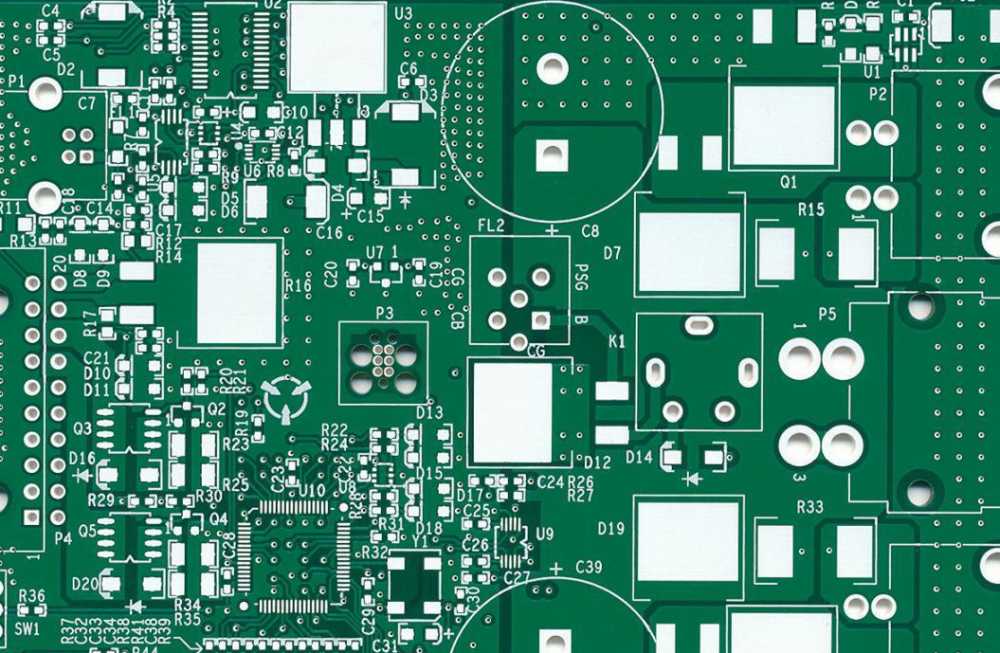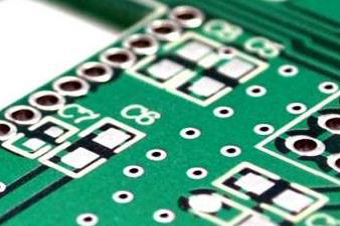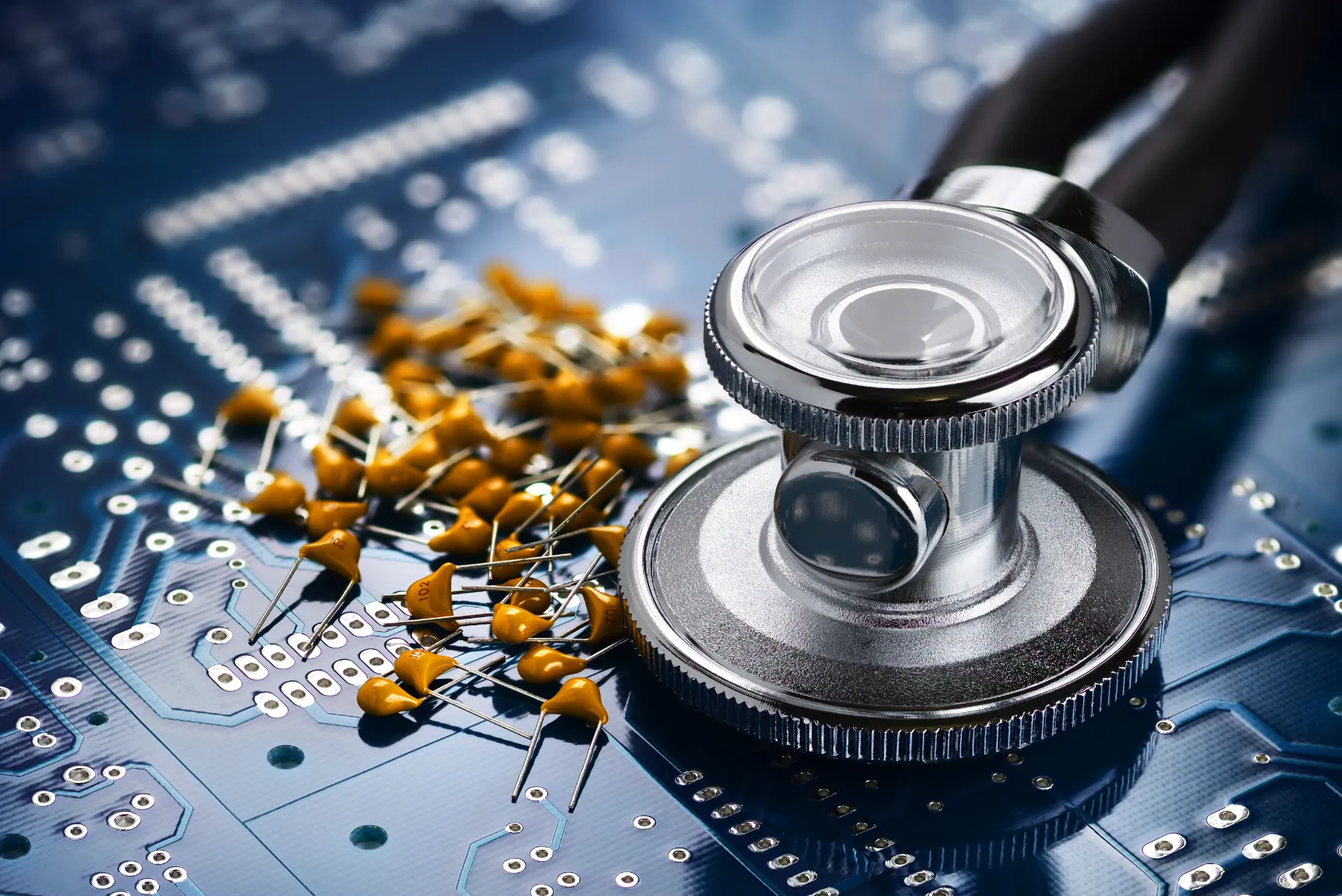If you're searching for a reliable surface finish for your printed circuit boards (PCBs), immersion silver might be the solution you need. This guide dives deep into immersion silver PCB advantages, disadvantages, applications, design considerations, and cost analysis. Whether you're an engineer, designer, or procurement specialist, you'll find actionable insights to help you decide if this finish suits your project. Let's explore everything you need to know about immersion silver PCBs in detail.
What Is an Immersion Silver PCB?
Immersion silver, often referred to as IM silver or immersion Ag, is a popular surface finish applied to the copper traces of a PCB. This finish protects the copper from oxidation and ensures good solderability during assembly. The process involves immersing the PCB in a chemical bath that deposits a thin layer of silver—typically 0.1 to 0.3 micrometers thick—onto the copper surfaces. This layer acts as a barrier against environmental factors while maintaining electrical conductivity.
Approximately 10% of PCBs worldwide use immersion silver as a finish, especially in applications requiring high reliability and compliance with lead-free standards like RoHS. Its popularity stems from its balance of cost, performance, and ease of use. In the following sections, we'll break down the key aspects of immersion silver PCBs to help you understand if it’s the right choice for your needs.

Immersion Silver PCB Advantages
Immersion silver offers several benefits that make it a preferred choice for many PCB projects. Below are the primary advantages that engineers and manufacturers often consider when selecting this finish.
1. Excellent Solderability
One of the standout features of immersion silver is its superior solderability. The thin silver layer provides a clean, oxide-free surface for soldering, ensuring strong and reliable joints. This is particularly important for lead-free soldering processes, where higher temperatures can make soldering more challenging. Tests have shown that immersion silver finishes can achieve wetting times as low as 1-2 seconds during soldering, compared to longer times with other finishes like organic solderability preservative (OSP).
2. High Conductivity
Silver is one of the best conductors of electricity, with a conductivity of approximately 63 x 10^6 S/m. While the layer on a PCB is thin, it still contributes to maintaining low resistance across connections. This makes immersion silver ideal for high-frequency applications where signal integrity is critical, such as in telecommunications equipment operating at frequencies above 1 GHz.
3. Flat Surface for Fine-Pitch Components
Immersion silver provides a very flat surface compared to alternatives like hot air solder leveling (HASL). This flatness is crucial for mounting fine-pitch components, ball grid arrays (BGAs), and other small parts with tight tolerances. A surface variation of less than 0.5 micrometers ensures precise placement and reduces the risk of defects during assembly.
4. RoHS Compliance
Immersion silver is fully compliant with RoHS (Restriction of Hazardous Substances) regulations, as it contains no lead or other restricted materials. This makes it a go-to option for manufacturers producing electronics for markets with strict environmental standards, such as the European Union.
5. Cost-Effective for Lead-Free Processes
While not the cheapest surface finish available, immersion silver offers a middle-ground cost for lead-free applications. It provides many of the benefits of more expensive finishes like electroless nickel immersion gold (ENIG) at a lower price point, making it an attractive choice for budget-conscious projects.

Immersion Silver PCB Disadvantages
While immersion silver has many strengths, it’s not without limitations. Understanding these drawbacks is essential to making an informed decision for your PCB project.
1. Susceptibility to Tarnishing
Silver is prone to tarnishing when exposed to air, moisture, or sulfur-containing environments. Tarnish can form a layer of silver sulfide on the surface, which may affect solderability if the PCB is stored for extended periods before assembly. For example, exposure to high humidity (above 80%) for just a few weeks can lead to noticeable discoloration. To mitigate this, PCBs with immersion silver must be stored in anti-tarnish packaging or used promptly.
2. Handling Sensitivity
The silver layer is delicate and can be easily contaminated by oils, acids, or salts from human skin. Handling immersion silver PCBs without gloves can lead to tarnishing or reduced solderability. Manufacturers often recommend strict handling protocols to avoid such issues during production and assembly.
3. Limited Shelf Life
Due to its susceptibility to tarnishing, immersion silver PCBs have a shorter shelf life compared to finishes like ENIG. Under ideal storage conditions (low humidity, sealed packaging), the shelf life is typically 6-12 months. Beyond this period, the risk of solderability issues increases significantly.
4. Not Ideal for Harsh Environments
Immersion silver is not the best choice for applications exposed to harsh environmental conditions, such as high humidity, temperature extremes, or corrosive atmospheres. The thin silver layer can degrade over time, leading to potential reliability issues in outdoor or industrial settings.
Immersion Silver PCB Applications
Immersion silver is widely used across various industries due to its unique combination of performance and cost. Here are some of the most common applications where this finish excels.
1. Consumer Electronics
Many consumer electronics, such as smartphones, tablets, and wearable devices, use immersion silver PCBs. The finish supports the fine-pitch components and BGAs commonly found in these compact designs, ensuring reliable soldering and signal transmission.
2. Telecommunications
In telecommunications equipment, where high-frequency signals (often above 2 GHz) are transmitted, immersion silver’s conductivity and flat surface help maintain signal integrity. It’s often used in base stations, routers, and other communication hardware.
3. Automotive Electronics
Immersion silver is sometimes used in automotive electronics for non-critical components, such as infotainment systems. However, due to its environmental limitations, it’s less common in under-the-hood applications where exposure to heat and moisture is high.
4. Medical Devices
For medical devices requiring high reliability and precise assembly, immersion silver provides the necessary solderability and flatness. It’s often found in diagnostic equipment and portable medical tools, provided the devices are used in controlled environments.

Immersion Silver PCB Design Guide
Designing a PCB with immersion silver as the surface finish requires attention to specific factors to ensure optimal performance. Below are key guidelines to follow during the design and manufacturing process.
1. Minimize Exposed Copper Areas
Since immersion silver only protects the copper it covers, any exposed copper areas are vulnerable to oxidation. Design your PCB to minimize uncovered copper by ensuring solder mask coverage over non-contact areas. This reduces the risk of corrosion during storage or use.
2. Plan for Fine-Pitch Components
Take advantage of immersion silver’s flat surface by designing for fine-pitch components or BGAs with pad spacing as tight as 0.5 mm. Ensure your layout aligns with the manufacturer’s capabilities to achieve precise silver deposition on small pads.
3. Account for Storage and Handling
During the design phase, consider how the PCB will be stored and handled before assembly. If long-term storage (beyond 6 months) is expected, discuss anti-tarnish packaging options with your manufacturer. Additionally, include handling instructions in your documentation to prevent contamination from bare hands.
4. Test for Signal Integrity
For high-frequency designs, simulate signal integrity to confirm that the thin silver layer supports your impedance requirements. Typical impedance values for immersion silver PCBs range from 50 to 75 ohms, depending on the trace geometry and dielectric material. Use design software to model these parameters accurately.
Immersion Silver PCB Cost Analysis
Cost is a critical factor when choosing a surface finish for your PCB. Immersion silver strikes a balance between affordability and performance, but let’s break down the cost factors to give you a clearer picture.
1. Material and Process Costs
The cost of applying immersion silver is generally lower than premium finishes like ENIG, which involves both nickel and gold layers. On average, immersion silver adds about 10-20% to the base cost of a standard PCB, depending on the board size and complexity. For a typical 100 mm x 100 mm double-sided PCB, this could translate to an additional $0.50 to $1.00 per board for small to medium volumes.
2. Volume Impact
Like most manufacturing processes, the cost per unit decreases with higher production volumes. For large-scale production (10,000 units or more), the per-board cost of immersion silver can drop significantly, often making it more economical than other lead-free finishes.
3. Storage and Handling Expenses
One hidden cost of immersion silver is the need for proper storage and handling. Anti-tarnish packaging and controlled storage environments (temperature below 25°C, humidity below 60%) can add to the overall expense, especially for projects with delayed assembly schedules. Budgeting an extra 5-10% for storage solutions is advisable.
4. Comparison to Other Finishes
Compared to OSP, immersion silver is more expensive but offers better solderability and shelf life under controlled conditions. Against ENIG, it’s more affordable—ENIG can cost 20-30% more per board due to the additional materials and process steps. However, ENIG provides better environmental resistance, which might justify the higher cost for certain applications.
Best Practices for Using Immersion Silver PCBs
To maximize the benefits of immersion silver and minimize its limitations, follow these best practices during manufacturing and assembly.
- Use Protective Packaging: Store PCBs in vacuum-sealed or anti-tarnish bags to prevent exposure to air and moisture.
- Wear Gloves During Handling: Always handle immersion silver PCBs with clean, lint-free gloves to avoid contamination from skin oils or sweat.
- Schedule Assembly Promptly: Plan your production timeline to assemble the PCBs within 6-12 months of applying the immersion silver finish.
- Conduct Solderability Tests: If PCBs have been stored for several months, perform a solderability test before assembly to ensure the silver layer remains effective.
Conclusion: Is Immersion Silver Right for Your PCB Project?
Immersion silver PCBs offer a compelling mix of advantages, including excellent solderability, high conductivity, and a flat surface for fine-pitch components. However, they come with limitations like tarnishing, handling sensitivity, and a limited shelf life. By understanding these trade-offs and following proper design and handling guidelines, you can make the most of this surface finish for applications in consumer electronics, telecommunications, and beyond.
When considering immersion silver, weigh the cost against your project’s environmental and performance requirements. For controlled environments and short-to-medium storage timelines, it’s a cost-effective and reliable choice. If you’re dealing with harsh conditions or long-term storage, other finishes might be worth exploring.
 ALLPCB
ALLPCB







